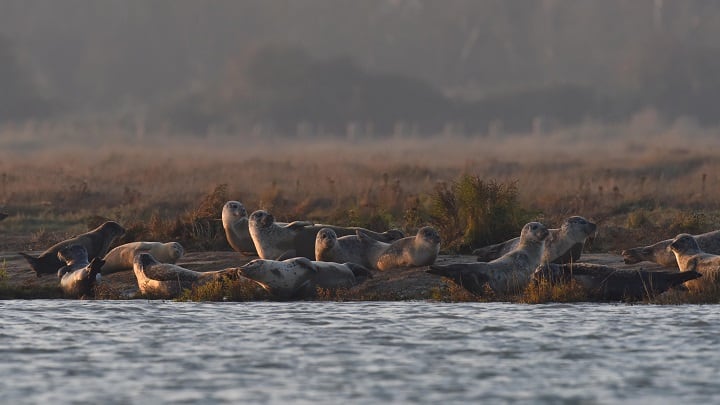
Kent Wildlife Trust is urging people to be aware of the damage that can be caused by disturbing seal populations at sites including Sandwich and Pegwell Bay.
The charity says people flocking to the sites to catch a glimpse of rare grey seals and common seals may be unaware they are causing a disturbance.
Seals can be disturbed easily and what may appear to be normal behaviour, like getting in and out of the sea, can have a significant impact on the marine mammal, causing them to struggle to put on weight or feed their pups. Repeated disturbance may result in injury from stampeding, they may gash their bellies on sharp rocks, tear their skin on sand or rip out their claws.
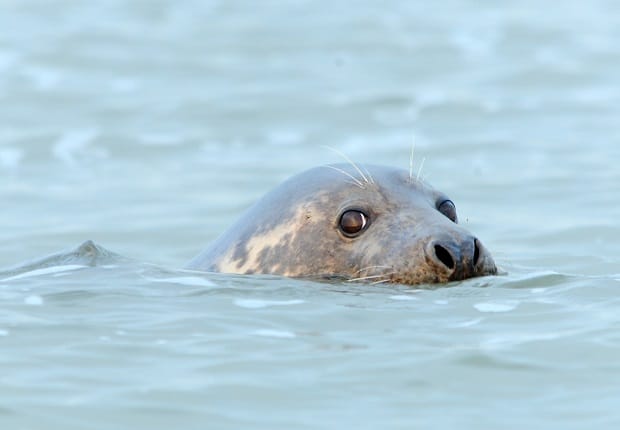
Protected Area Warden Nina Jones said: “Seals can be curious animals, but are also easily frightened, and they are at their most vulnerable when on land. Getting out of the water, takes a lot of energy, and it is important for their survival that they can rest.
“Seals may be very curious but continued disturbance can have fatal consequences and, with seal numbers in rapid decline, everyone has a role to play in protecting them.”
The upsurge in paddle boarding poses a particular risk to seals as they can approach animals quietly and get too close.
Nina added: “We want paddlers to enjoy the beautiful coastline but, what appears to be a peaceful activity, carries a significant risk to seals. Paddlers can help seals by paddling slowly and steadily, not stopping at a seal site, or getting too close. Never try to take a seal selfie or feed or follow them. If a seal is repeatedly lifting its head and looking in your direction, you have disturbed it, so leave the area slowly and quietly.”
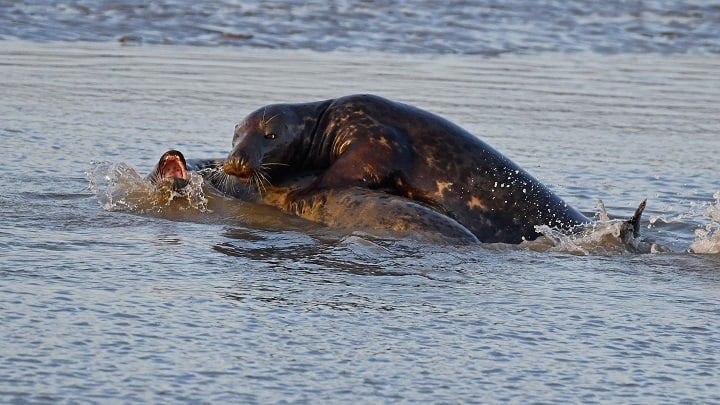
A rise in the number of boat tour operators offering seal experiences has prompted Kent Wildlife Trust to encourage companies to complete WiSe training a scheme centered around watching marine wildlife in a wildlife-safe way. Operators learn how they can safely conduct tours without significantly impacting wildlife which is especially important for seals.
So far, one tour operator operating in the area is WiSe trained with more interested in taking part, and the trust is keen for more business to complete the course.
Paul Cannon runs River Runner with his partner Lauren Fossey. Both have both completed the training. He said: “It is important that everyone is equipped with the knowledge to run tours safely so that wildlife can thrive. The WiSe scheme promotes responsible wildlife watching through training and education so we can run tours that allow people to get closer to nature, without impacting on the local wildlife and their habitats.”
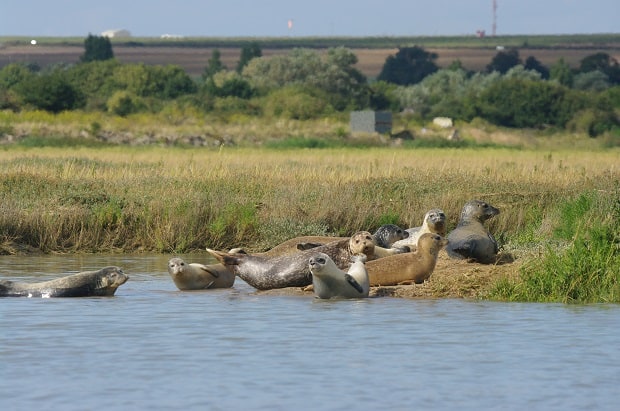
Nina added: “One of our Wilder Kent 2030 strategy goals is to engage with more people to do more for nature so we can protect 30% of Kent’s land and sea and by working with tour operators, the paddle board community and those enjoying our coastline for recreation we are all helping nature in our county thrive.”
In addition to protecting seals, people visiting the coastline are asked to think carefully about how their presence impacts nature. Sites like Sandwich and Pegwell Bay are a haven for migratory birds who often nest on the ground. This means they are vulnerable to disturbance, particularly from dogs. Those walking dogs in the area are asked to keep their pet on a lead to project the precious habitats.
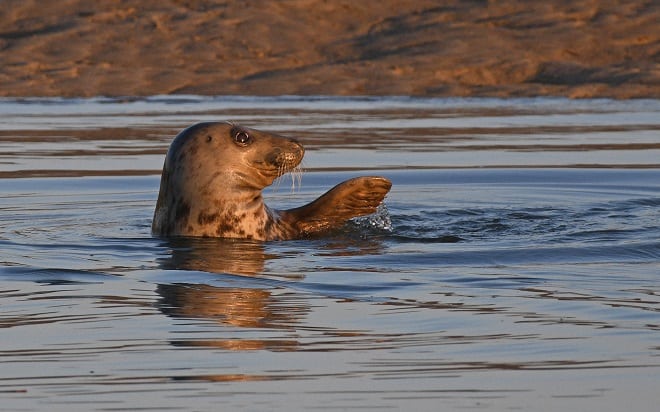
People can learn more about watching seals safely on Kent Wildlife Trust’s website.
Those wishing to help the charity protect nature can donate or purchase a seal adoption pack.
What does seal disturbance look like?

Seals in may appear in control of encounters and they may be very curious about you but avoid staying in their company for too long as you may distract them from their feeding, digesting, sleeping, or traveling routine.
If a seal raises its head and repeatedly looks at you, you’re too close and you have disturbed it.
If seals in the sea are agitated, they may dive, making a significant splash at the surface, or just disappear, having been displaced by you.
It is unusual to encounter more than 10 seals in the sea. They may have already seen you and, as a result, been flushed out to sea.
Be especially careful in breeding season

In Kent, Grey Seals pup over Winter and harbour Seals pup in early Summer. If disturbed a pregnant seal may be unable to store enough fat to feed her pup or a seal that has recently given birth may abandon her young. In both instances it is likely the pup will die.
If a white-coated or small-moulted pup is spotted, be aware that its mother may be nearby in the sea with a sightline to her pup. She will stay underwater for around 12 minutes, so she should be visible within 30. She will not return to feed her pup if she sees people or there is a strong scent of humans.
Advice for visitors
Bring binoculars or a camera with a good zoom lens, the boat must stay a safe distance from the seals.
Be as quiet as possible and talk in hushed voices.
Stay as still as possible and avoid moving.
Follow the direction of your guide if you have one.
Never attempt to feed a seal.
Enjoy the precious and special moment.
Spread the word about how to behave when viewing seals.
Please do not take a seal selfie.
Do what you can to support seal conservation, become a member of Kent Wildlife Trust or share the experience on social media.

